Sony Z1 Compact smartphone: review, photos, customer reviews. Information about other important connection technologies supported by your device. Performance and battery life
Compact version of the flagship Sony smartphone Xperia Z1: Compact not only took all the best features from its older brother, but also acquired other interesting features. Somehow the device reminded me of Sony Ericsson Xperia Ray – remember this smartphone? I really liked him at the time.
Design
I want to say in advance that I will not repeat the thoughts expressed in the Z1 review, technically these are identical devices. Here I’ll only talk about the differences and draw conclusions about whether it’s worth buying or not. By tradition, let's start with appearance. If you suddenly want to know something about performance and other points not mentioned here, you are welcome to read the review Sony Xperia Z1, there are answers to all questions.
The device is very similar to the Z1, but with a decrease in the display diagonal, several metamorphoses have occurred. Firstly, the Z1 Compact feels much better in the hand. And the metal “frame” has not gone away, and pay attention to the anodizing, for the “lime” color it is special, not silver, but yellowish, closer to gold. It looks very cool. Secondly, the black smartphone is the most boring in the line, I would recommend looking at other options. This is lime, white and pink, all the colors are very pleasant, I myself use yellow, it’s perfect for spring and summer - and I’m already tired of the same type of black or silver bars. And a black smartphone is the most easily soiled; fingerprints are very noticeable.
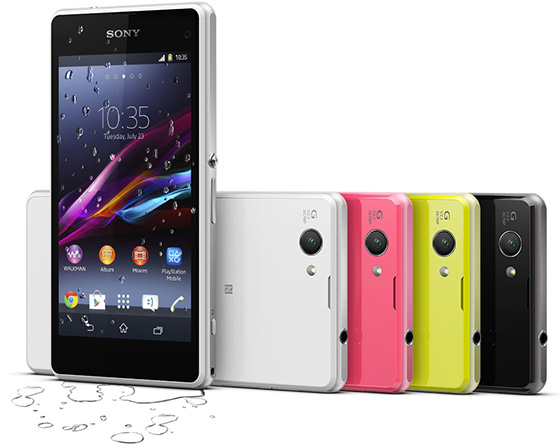
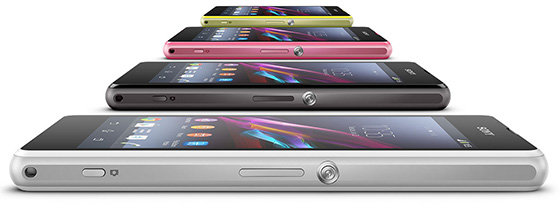

Thirdly, instead of glass on the back (like the Z1), it uses a plastic panel with a film. This is written on the official website. Finally, the device has become smaller and, despite its similarities with the Z1, is perceived as a completely different device. On the one hand, it is fair to say that this is the same gadget as the Z1, on the other hand, it is a slightly different device.


Unfortunately, the Z1 Compact belongs to the film generation, films are installed on both the front and back, don’t even try to remove them - you’ll immediately lose the Sony inscriptions, you will have unnamed device. Films are scratched, this is not particularly noticeable on a device of this color, but on black it is visible very well. If you are angry about films as a phenomenon, but want an Xperia, wait for the Z2, it will be on sale soon.


In addition to the films, the plugs are very annoying; I have short nails and it can be difficult to open. It’s good that at least the 3.5 mm jack is open, but for charging you can use a stand for the magnetic connector, I recommend buying one for you too. It is unlikely that you will open other slots often; there are two of them, for a SIM card (microSIM) and a memory card (microSD). Cards with a capacity of up to 64 GB are supported, everything is typical - like the Sony Xperia Z1.
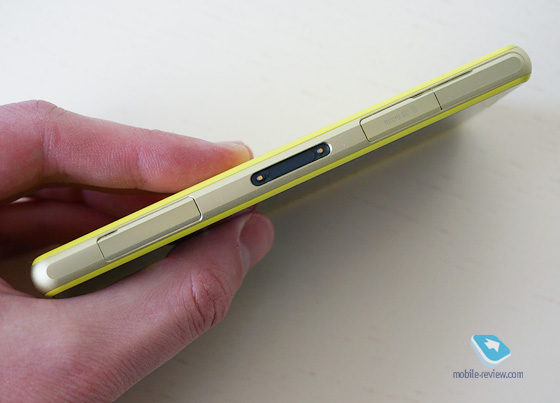
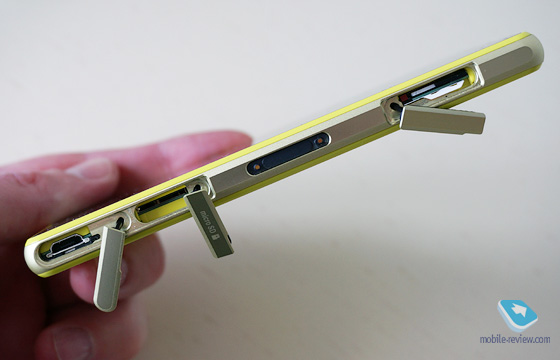
In general, I like Sony’s approach; they really just made the flagship smartphone smaller without making any changes to things that are really important to the user. For example, they didn’t remove the memory card slot – but they could have. They didn’t make the camera worse, they didn’t remove the water protection. And the Z1 Compact can be safely bathed in the sink or washed after the gym. Considering the colors and features of the device, a smartphone could very well be the perfect vacation device for someone. True, the sand may leave scratches - but what difference does it make if you can use it to shoot underwater?

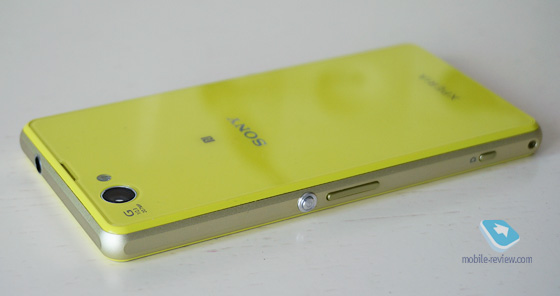
Exact dimensions are 127 x 64.9 x 9.5 mm, weight – 137 grams. Slightly larger than the iPhone 5S, but with daily use the difference is not noticeable. Here's the Z1 or Z2 - yes, you feel it in your pocket, but the Z1 Compact and 5S are just babies by today's standards.
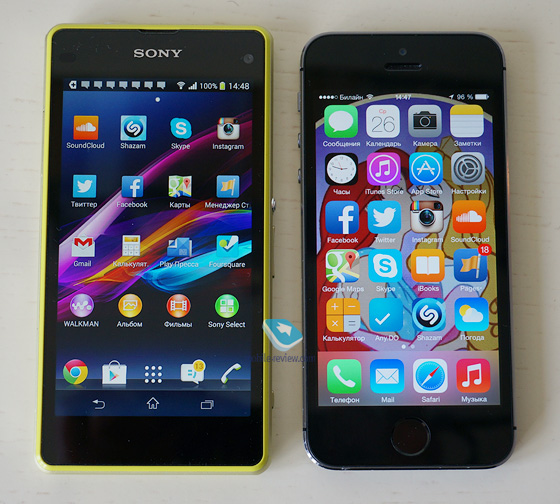

The controls remain the same, there is a camera button, for many this is a big plus - when pressed, you can quickly take a picture, the behavior of the button is customizable. The power button is traditional; if you hold the device in your right hand, your thumb rests on it. Below is the volume rocker. There is a light indicator right in the earpiece; it informs you about various events. At the bottom there is a groove for attaching a strap, next to it is a perforation, under which the speaker is hidden. You can't call it loud, much quieter than the iPhone 5S.
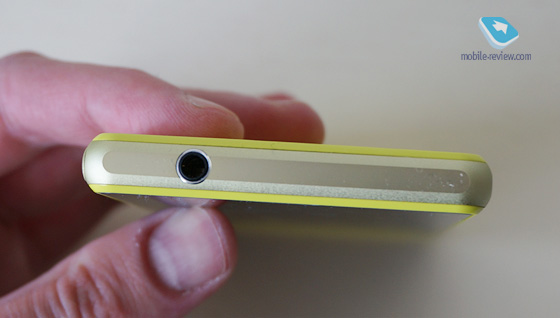




Display
I’ll say right away that the display here is much better than that of the Z1, this primarily concerns viewing angles, there is no fading. Good black color, the image does not hurt the eyes, but the screen is slightly yellow. In the settings you can play with the white balance, but this does not bring any visible effect - and in general, I don’t quite understand why these settings are needed. No matter how you move the sliders, it only gets worse. However, this is a subjective opinion. The Z1 had no white balance settings, and there was no mode for working with the screen while wearing gloves; these are also differences in the Z1 Compact.


The TFT display diagonal is 4.3 inches, resolution is 1280 x 720 pixels. The official documents indicate exactly TFT, I don’t know what screen is in the Japanese version. After Z1, this one seems very good.

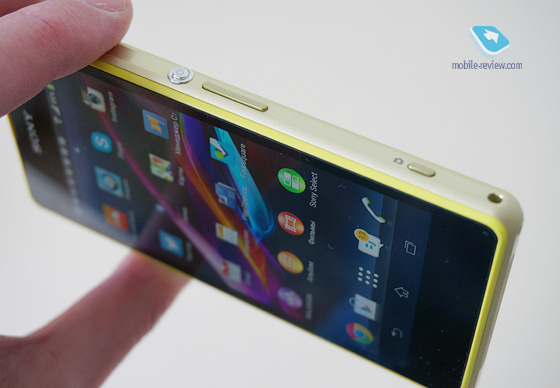
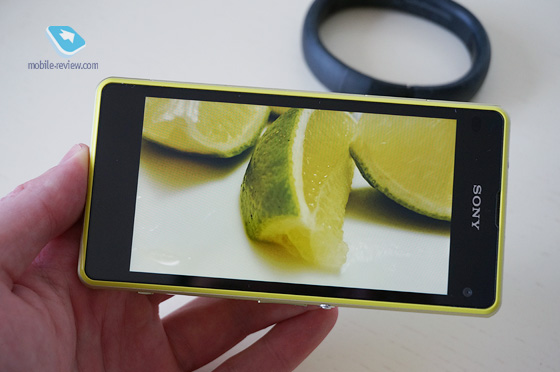
Everyone who is used to big screens, I want to warn you - everything looks different with the Z1 Compact. It's about various programs, websites, videos and so on. If Z1 you could use both universal device, in some ways capable of replacing a tablet, not to mention the Z Ultra, then the Z1 Compact is a different story. I remember another successful Sony smartphone, even Sony Ericsson. Let's remember the Xperia Ray. Great gadget for Android based, with excellent design, good screen and good characteristics - and what I liked most was the size of the device and the mechanical semicircular button.

Many people then said that Ray was a stupid device, there was no powerful processor or some wild characteristics. It was the image component that captivated me. And the audience for such devices, of course, has not disappeared anywhere - these are those people who make calls more often, write messages, that is, use a smartphone as a telephone. And all sorts of “smart” functions are of secondary importance. If you ask the question, “why not buy a phone then?”, I’ll answer simply - where have you seen phones with a good design now? That's it, friends, Sony times Ericsson W880 and Nokia 8800 have sunk into oblivion.
In general, Ray had fans, and it sold well - although SE was then going through a difficult period, searching for itself, and continuous losses. There was no continuation. Maybe the Sony Xperia Z1 Compact is a sequel?
Problems
- On the plastic cover and scratches on the film. I already said about this above; the issue can only be resolved in one way - by gluing another film. Or choose another device. Or wait for Z2.
- With a flash, due to its smaller size there is flare when shooting in different times day and night. Although not all users experience this problem, it is likely to be fixed by software. Do you use flash often? Personally, never. On the iPhone I turn it on only to find something in the dark. I tried the Sony Xperia Z1 flash indoors at night, during the day, I can say that it really “knocks out” the colors and it’s better to turn it off. There is another problem, you need to get used to shooting, the pictures may turn out to be bad if you use the button - when you press and release it, the device moves a little, resulting in a slightly blurry image. The point here again is changing the size; I didn’t notice this with the Z1 - it’s better to press the button on the display. Try it, you'll probably get better shots.
- There are complaints that the camera button stops working or works every once in a while - keep in mind that for it to work, you need to press it all the way until you feel vibration, almost sinking it into the body. It has two positions: a short press activates focusing, a long press activates a photo. Or launch the camera.
- And one more thing about the camera, I don’t recommend using the automatic mode, the resolution is only 8 MP, the quality is worse than with the manual setting.
- Defective buttons, display - I have not encountered this. Worth checking before purchasing
- Quiet speaker, and ordinary too. I didn't notice this. The regular speaker is quiet, but there are no problems with conversation, the only thing is that I turned the volume up to full. That the voices sound a little unnatural (a little muddy), that’s true, but I wouldn’t call it a problem.
- Plugs. Many people are afraid that they will break away. The problem is solved by purchasing a docking station with a magnet, but in general, they have never come off on my Sony smartphones, you have to try. And the service center will probably give you a new one without any problems.
How much of this is serious? The films upset me, the rest doesn’t bother me at all. If you get used to it, the Sony Xperia Z1 Compact will help you create high quality pictures, I’m already silent about photographs for Instagram and other social networks. A quiet ordinary speaker is fine, the main thing is that there is a loud conversational one. Check problems with buttons locally. I also had no problems with the screen, and I have been using the device for a long time.
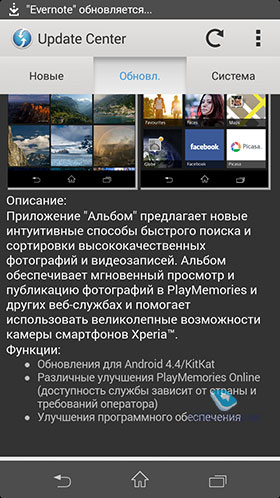
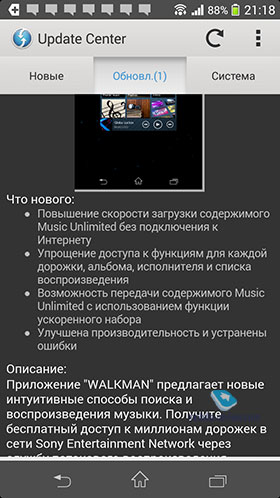
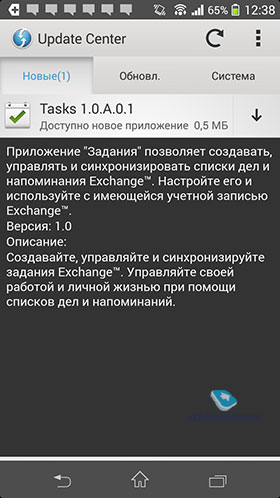
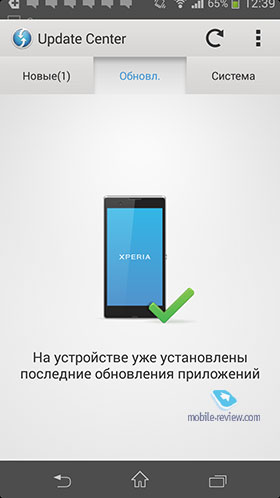
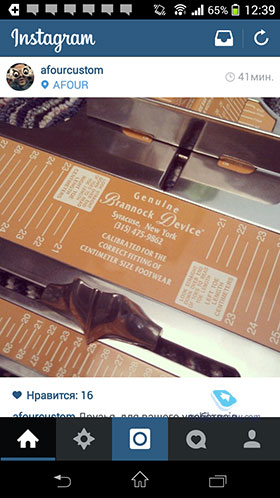




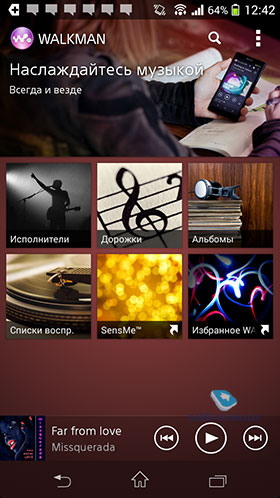











Opening hours
The declared operating time is 18 hours in talk mode, in music playback mode it is 94 hours (not every player is capable of this), in video playback mode the Z1 Compact lasts about 12 hours. A 2300 mAh battery is installed. Compared to the Z1, the smartphone lasts much longer; sometimes it lasts me a couple of days, if I just make calls and listen to music. It is worth noting fast charging battery (relative to Z1).
Keep in mind that if you have Stamina mode activated (i.e. power saving mode), then third party applications may not work on time, this is especially important in relation to alarm clocks, timers, and programs for organizing schedules.
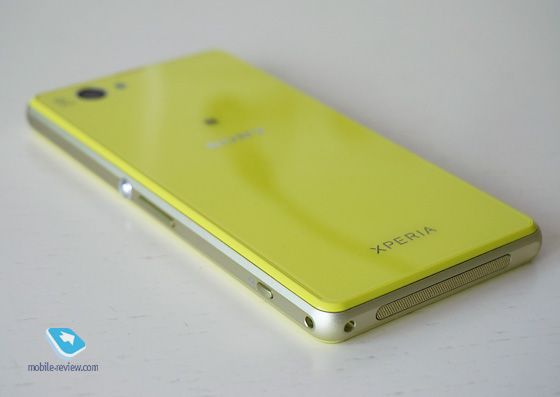
Specifications
You can read about the processor, software, memory, format support and similar things in the Z1 review.
Camera
The characteristics are the same as those of the Z1; I talked about the flash above. In short, if you really use flash a lot, you probably won't like the Z1 Compact. The frame may turn out to be overexposed, I repeat, I never use this function in everyday life, the flash only works as a flashlight. Below are a few examples of photos; the weather in Moscow is going great right now, so it was great to take an early morning walk in one of my favorite areas. As you can see, with the help of the Z1 Compact you can really create quite good frames both for viewing on a laptop screen and for printing - although I don’t know if you still print photos? It would be interesting to know, I haven’t done this for a long time.
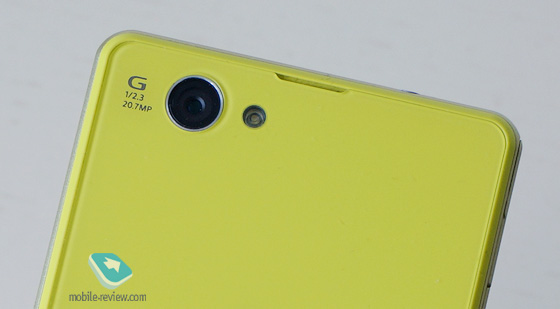


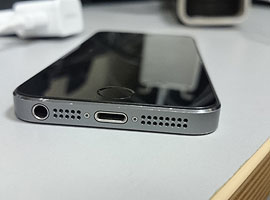
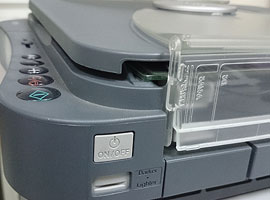







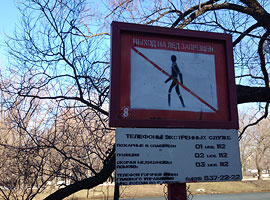








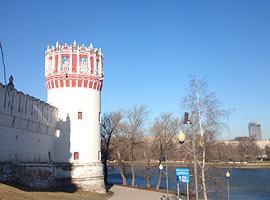
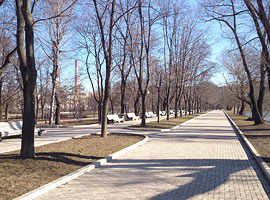


R'иджет от SocialMart
Conclusions
The average price is about 22,500 rubles, you can buy a little more expensive, you can buy a little cheaper (about 18,000 rubles). For Sony Xperia Z1 they ask about 24,990 rubles, you can find it cheaper. Everything is written above about the differences, which device to choose? If you need a large display diagonal and the quality of the screen is not important, then a simple Z1. If you need an image compact smartphone with a normal display, then Z1 Compact. In some ways, the younger model turned out even better than her older brother. The advantages are:
- Interesting design, colors
- LTE support
- Excellent characteristics for a device of this size
- Not a bad camera (in capable hands)
- Good quality sound with a branded headset, but not only - I’ll once again advise you to try the SBH-80, Sony has an interesting accessory
- Water protection
- Good display, better than Z1 (but smaller diagonal)
- Long time battery life(compared to Z1)
The disadvantages are:
- I really want to believe that Sony will start working on the quality of speech transmission and the performance of speakers
- Many people will not like the software package offered by Sony - there are too many additional utilities for unclear purposes.
- Alas, we can’t refuse plugs yet, given the availability of water protection
- Strange flash operation, I repeat, for some this is a minus, for others it doesn’t matter
- Films. And that says it all!
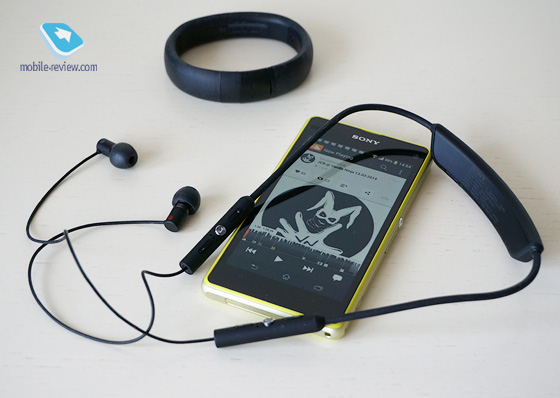
If you loved the Sony Xperia Ray back in the day and are now looking for a good looking compact smartphone, check out the Z1 Compact. Despite the negative reviews online, I am impressed by the device. It is convenient to use as a phone and for the simplest tasks (check email, social media, listen to music, take a photo), reducing the display diagonal had a positive effect on operating time. It’s gratifying that Sony did not degrade the performance compared to the flagship; this captivates many. The device turned out to be well-built and interesting for the widest audience - I hope that the Z2 will also have its own Compact.
Sergey Kuzmin ()
Sony Xperia Z1 Compact smartphone: first look at the mini-flagship
Mini versions of flagships have long become commonplace in the smartphone market. All sorts of things out there HTC One mini, Samsung Galaxy S4 mini, etc. True, these “minis” have only one name from the flagship. In fact, the company produces just an ordinary budget phone or a smartphone in the mid-price segment, and for marketing purposes gives it the name of a flagship. This is intended for those who don't bother too much real provisions things, trusting what is written on the box as the ultimate truth. In the background..
Sony Xperia Z1 Compact smartphone review: honest mini
Unlike the vast majority of smartphone manufacturers, Sony took a different route, creating a pocket version of its flagship, which received all the top characteristics and features. The differences are only in the size of the device and the reduced diagonal of the display. Contents The original box contains a power supply, a microUSB cable, a wired headset with replaceable ear pads, and quick guide user and a set of additional brochures. Design and ergonomics Small version...
Concentrated "flagship". Review of the Sony Xperia Z1 Compact smartphone
Despite the success of tablet phones among buyers, interest in small-sized devices is still great. This is partly why, in addition to their premium models, many companies have begun to release smaller smartphones, keeping the names of the flagships in their names. Unfortunately, smaller dimensions have simultaneously become synonymous with poor technical equipment of such devices. This trend was broken by Sony, which “shrinked” its last year’s flagship Xperia Z1 to a very compact size...
Small, but daring! Detailed testing new Japanese mini-flagship
Sony Xperia Z1 Compact is one of those products that, even before entering the market, gain wide popularity and gain a lot of fans. In the situation with the Sony Xperia Z1 Compact, the reason for this was the unusual shortage of smartphones of a certain kind, which developed in lately in the global mobile market. The fact is that in the last few years, which have passed under the slogan “faster, higher, stronger,” it has become almost impossible to find a top-end, powerful and maximally equipped with the fruits of all...
Review of the Sony Xperia Z1 Compact smartphone
All self-respecting manufacturers have the coolest smartphone, which pleases the user as much as possible with the number of cores and megapixels. And this smartphone has a younger brother with slightly less impressive capabilities - but it costs less and takes up less space! The Z1 Compact looks great in this capacity. HTC One Mini and even the Samsung Galaxy S4 Mini turned out to be quite good devices, but compared to their older brothers, they clearly lack performance. Xperia..
Finally! Review of the Sony Xperia Z1 Compact smartphone
Against the backdrop of total consolidation flagship smartphones and blurring the line between them and compact tablets, we have an alternative - Sony Xperia Z1 Compact. The device is distinguished by its rather modest size and at the same time powerful modern filling. Let's get to know him better. It seems that we can’t escape the dominance of gigantic phones: the average user wants a mobile device that can do everything at once. With this approach, you always have to sacrifice something, in this case...
Information about the make, model, and alternative names of the specific device, if available.
Design
Information about the dimensions and weight of the device, presented in different units of measurement. Materials used, colors offered, certificates.
| Width Width information - refers to the horizontal side of the device in its standard orientation during use. | 64.9 mm (millimeters) 6.49 cm (centimeters) 0.21 ft (feet) 2.56 in (inches) |
| Height Height information - refers to the vertical side of the device in its standard orientation during use. | 127 mm (millimeters) 12.7 cm (centimeters) 0.42 ft (feet) 5 in (inches) |
| Thickness Information about the thickness of the device in different units measurements. | 9.4 mm (millimeters) 0.94 cm (centimeters) 0.03 ft (feet) 0.37 in (inches) |
| Weight Information about the weight of the device in different units of measurement. | 137 g (grams) 0.3 lbs (pounds) 4.83 oz (ounces) |
| Volume The approximate volume of the device, calculated based on the dimensions provided by the manufacturer. Refers to devices with the shape of a rectangular parallelepiped. | 77.48 cm³ (cubic centimeters) 4.71 in³ (cubic inches) |
| Colors Information about the colors in which this device is offered for sale. | Black White Pink Yellow |
| Certification Information about the standards to which this device is certified. | IP55 IP58 |
SIM card
The SIM card is used in mobile devices to store data that certifies the authenticity of mobile service subscribers.
Mobile networks
A mobile network is a radio system that allows multiple mobile devices to communicate with each other.
| GSM GSM (Global System for Mobile Communications) is designed to replace the analogue mobile network (1G). According to this reason GSM very often called a 2G mobile network. It is improved by the addition of GPRS (General Packet Radio Services), and later EDGE (Enhanced Data rates for GSM Evolution) technologies. | GSM 850 MHz GSM 900 MHz GSM 1800 MHz GSM 1900 MHz |
| UMTS UMTS is an abbreviation for Universal Mobile Telecommunications System. It is based on the GSM standard and belongs to 3G mobile networks. Developed by 3GPP and its biggest advantage is providing greater speed and spectral efficiency thanks to W-CDMA technology. | UMTS 850 MHz UMTS 900 MHz UMTS 1700/2100 MHz UMTS 1900 MHz UMTS 2100 MHz |
| LTE LTE (Long Term Evolution) is defined as a technology fourth generation(4G). It is developed by 3GPP based on GSM/EDGE and UMTS/HSPA to increase the capacity and speed of wireless mobile networks. The subsequent technology development is called LTE Advanced. | LTE 800 MHz LTE 850 MHz LTE 900 MHz LTE 1700/2100 MHz LTE 1800 MHz LTE 1900 MHz LTE 2100 MHz LTE 2600 MHz |
Mobile communication technologies and data transfer speeds
Communication between devices on mobile networks is carried out using technologies that provide different data transfer rates.
Operating system
An operating system is a system software that manages and coordinates the operation of hardware components in a device.
SoC (System on Chip)
A system on a chip (SoC) includes all the most important hardware components of a mobile device on one chip.
| SoC (System on Chip) A system on a chip (SoC) integrates various hardware components, such as a processor, graphics processor, memory, peripherals, interfaces, etc., as well as the software necessary for their operation. | Qualcomm Snapdragon 800 MSM8974AA |
| Process Information about technological process, on which the chip is made. Nanometers measure half the distance between elements in the processor. | 28 nm (nanometers) |
| Processor (CPU) Primary function of the processor (CPU) mobile device is the interpretation and execution of instructions contained in software applications. | Krait 400 |
| Processor size The size (in bits) of a processor is determined by the size (in bits) of the registers, address buses, and data buses. 64-bit processors have higher performance compared to 32-bit processors, which in turn are more powerful than 16-bit processors. | 32 bit |
| Instruction Set Architecture Instructions are commands with which the software sets/controls the operation of the processor. Information about the instruction set (ISA) that the processor can execute. | ARMv7 |
| Level 0 cache (L0) Some processors have L0 (level 0) cache, which is faster to access than L1, L2, L3, etc. The advantage of having such memory is not only higher performance, but also reduced power consumption. | 4 kB + 4 kB (kilobytes) |
| Level 1 cache (L1) Cache memory is used by the processor to reduce access time to more frequently used data and instructions. L1 (level 1) cache is small in size and works much faster as system memory, and other levels of cache memory. If the processor does not find the requested data in L1, it continues to look for it in the L2 cache. On some processors, this search is performed simultaneously in L1 and L2. | 16 kB + 16 kB (kilobytes) |
| Level 2 cache (L2) L2 (level 2) cache is slower than L1, but in return it has a larger capacity that allows caching more data. It, like L1, is much faster than system memory (RAM). If the processor does not find the requested data in L2, it continues to look for it in the L3 cache (if available) or in RAM memory. | 2048 kB (kilobytes) 2 MB (megabytes) |
| Number of processor cores The processor core performs program instructions. There are processors with one, two or more cores. Having more cores increases performance by allowing multiple instructions to be executed in parallel. | 4 |
| CPU clock speed The clock speed of a processor describes its speed in terms of cycles per second. It is measured in megahertz (MHz) or gigahertz (GHz). | 2200 MHz (megahertz) |
| Graphics Processing Unit (GPU) Graphics processing unit (GPU) handles calculations for various 2D/3D graphic applications. In mobile devices, it is most often used by games, consumer interfaces, video applications, etc. | Qualcomm Adreno 330 |
| Number of cores GPU Like a CPU, a GPU is made up of several working parts called cores. They handle graphics calculations for various applications. | 4 |
| GPU clock speed Speed of work is clock frequency GPU speed, which is measured in megahertz (MHz) or gigahertz (GHz). | 450 MHz (megahertz) |
| Volume RAM(RAM) Random access memory (RAM) is used by the operating system and all installed applications. Data stored in RAM is lost after the device is turned off or restarted. | 2 GB (gigabytes) |
| Type of random access memory (RAM) Information about the type of random access memory (RAM) used by the device. | LPDDR3 |
| Number of RAM channels Information about the number of RAM channels that are integrated into the SoC. More channels means more high speeds data transfer. | Dual channel |
| RAM frequency The frequency of RAM determines its operating speed, more specifically, the speed of reading/writing data. | 800 MHz (megahertz) |
Built-in memory
Each mobile device has built-in (non-removable) memory with a fixed capacity.
Memory cards
Memory cards are used in mobile devices to increase the storage capacity for storing data.
Screen
The screen of a mobile device is characterized by its technology, resolution, pixel density, diagonal length, color depth, etc.
| Type/technology One of the main characteristics of the screen is the technology by which it is made and on which the quality of the information image directly depends. | IPS |
| Diagonal For mobile devices, screen size is expressed by the length of its diagonal, measured in inches. | 4.3 in (inches) 109.22 mm (millimeters) 10.92 cm (centimeters) |
| Width Approximate screen width | 2.11 in (inches) 53.55 mm (millimeters) 5.35 cm (centimeters) |
| Height Approximate screen height | 3.75 in (inches) 95.19 mm (millimeters) 9.52 cm (centimeters) |
| Aspect Ratio The ratio of the dimensions of the long side of the screen to its short side | 1.778:1 16:9 |
| Permission Screen resolution shows the number of pixels vertically and horizontally on the screen. Higher resolution means clearer image detail. | 720 x 1280 pixels |
| Pixel Density Information about the number of pixels per centimeter or inch of the screen. More high density Allows you to display information on the screen with clearer details. | 342 ppi (pixels per inch) 134 ppcm (pixels per centimeter) |
| Color depth Screen color depth reflects the total number of bits used for color components in one pixel. Information about the maximum number of colors that the screen can display. | 24 bit 16777216 flowers |
| Screen area Approximate percentage of screen area occupied by the screen on the front of the device. | 62.04% (percent) |
| Other characteristics Information about other screen features and characteristics. | Capacitive Multi-touch |
| Sony BRAVIA Mobile engine 2 Triluminos display for mobile X-Reality display |
Sensors
Different sensors perform different quantitative measurements and convert physical indicators into signals that a mobile device can recognize.
Main camera
The main camera of a mobile device is usually located on the back of the body and is used for taking photos and videos.
| Sensor model Information about the manufacturer and model of the photo sensor used in the device's camera. | Sony Exmor RS |
| Sensor type Digital cameras use photo sensors to take photographs. The sensor, as well as optics, are one of the main factors in the quality of the camera in a mobile device. | CMOS (complementary metal-oxide semiconductor) |
| Sensor size Information about the dimensions of the photosensor used in the device. Typically cameras with larger sensors and lower pixel densities offer more high quality images despite the lower resolution. | 6.17 x 4.55 mm (millimeters) 0.3 in (inches) |
| Pixel size The smaller pixel size of the photosensor allows more pixels per unit area, thus increasing resolution. On the other hand, a smaller pixel size may have a negative impact on image quality when high levels photosensitivity (ISO). | 1.176 µm (micrometers) 0.001176 mm (millimeters) |
| Crop factor The crop factor is the ratio between the dimensions of the full-frame sensor (36 x 24 mm, equivalent to a frame of standard 35 mm film) and the dimensions of the device's photosensor. The indicated number represents the ratio of the diagonals of the full-frame sensor (43.3 mm) and the photosensor specific device. | 5.64 |
| ISO (light sensitivity) ISO indicators determine the level of light sensitivity of the photosensor. A lower value means weaker light sensitivity and vice versa - higher values mean higher light sensitivity, i.e. better ability of the sensor to work in low light conditions. | 64 - 3200 |
| Diaphragm Aperture (f-number) is the size of the aperture opening that controls the amount of light reaching the photosensor. A lower f-number means the aperture opening is larger. | f/2.0 |
| Focal length Focal length is the distance in millimeters from the photosensor to the optical center of the lens. The equivalent focal length is also indicated, providing the same field of view with a full frame camera. | 4.79 mm (millimeters) 27.02 mm (millimeters) *(35 mm / full frame) |
| Flash type The most common types of flashes in mobile device cameras are LED and xenon flashes. LED flashes provide more soft light and unlike brighter xenon ones, they are also used for video shooting. | LED |
| Image Resolution One of the main characteristics of mobile device cameras is their resolution, which shows the number of horizontal and vertical pixels in the image. | 5248 x 3936 pixels 20.66 MP (megapixels) |
| Video resolution Information about the maximum supported resolution when shooting video with the device. | 1920 x 1080 pixels 2.07 MP (megapixels) |
| Video - frame rate/frames per second. Information about the maximum number of frames per second (fps) supported by the device when shooting video at the maximum resolution. Some of the main standard video shooting and playback speeds are 24p, 25p, 30p, 60p. | 30fps (frames per second) |
| Characteristics Information about other software and hardware features related to the main camera and improving its functionality. | Autofocus Continuous shooting Digital zoom Digital image stabilization Geographical tags Panoramic photography HDR shooting Touch Focus Face recognition White Balance Adjustment Exposure compensation Self-timer Scene Selection Mode |
| G lens |
Additional camera
Additional cameras are usually mounted above the device screen and are used mainly for video conversations, gesture recognition, etc.
Audio
Information about the type of speakers and audio technologies supported by the device.
Radio
The radio of the mobile device is a built-in FM receiver.
Location determination
Information about the navigation and location technologies supported by your device.
WiFi
Wi-Fi is a technology that provides wireless communication for transmitting data over close distances between various devices.
Bluetooth
Bluetooth is a standard for secure wireless data transfer between various devices of different types over short distances.
| Version There are several Bluetooth versions, while each subsequent one improves communication speed, coverage, and facilitates easier detection and connection of devices. Information about the Bluetooth version of the device. | 4.0 |
| Characteristics Bluetooth uses different profiles and protocols to provide more quick exchange data, energy savings, improved device discovery, etc. Some of these profiles and protocols that the device supports are shown here. | A2DP (Advanced Audio Distribution Profile) AVRCP (Audio/Visual Remote Control Profile) DIP (Device ID Profile) GATT (Generic Attribute Profile) HDP (Health Device Profile) HFP (Hands-Free Profile) HID (Human Interface Profile) MAP (Message Access Profile) OPP (Object Push Profile) PAN (Personal Area Networking Profile) PBAP/PAB (Phone Book Access Profile) SPP (Serial Port Protocol) |
USB
USB (Universal Serial Bus) is an industry standard that allows different electronic devices to exchange data.
HDMI
HDMI (High-Definition Multimedia Interface) is a digital audio/video interface that replaces older analog audio/video standards.
Headphone jack
This is an audio connector, also called an audio jack. The most widely used standard in mobile devices is the 3.5mm headphone jack.
Connecting devices
Information about other important connection technologies supported by your device.
Browser
A web browser is a software application for accessing and viewing information on the Internet.
| Browser Information about some of the main characteristics and standards supported by the device's browser. | HTML HTML5 CSS 3 |
Audio file formats/codecs
Mobile devices support different audio file formats and codecs, which respectively store and encode/decode digital audio data.
Video file formats/codecs
Mobile devices support different video file formats and codecs, which respectively store and encode/decode digital video data.
Battery
Mobile device batteries differ from each other in their capacity and technology. They provide the electrical charge necessary for their functioning.
| Capacity Battery capacity shows maximum charge, which it is capable of storing, measured in milliamp-hours. | 2300 mAh (milliamp-hours) |
| Type The type of battery is determined by its structure and, more precisely, the chemicals used. There are different types batteries, with lithium-ion and lithium-ion polymer batteries most often used in mobile devices. | Li-Ion (Lithium-ion) |
| 2G talk time 2G talk time is the period of time during which the battery charge is completely discharged during a continuous conversation on a 2G network. | 10 h (hours) 600 min (minutes) 0.4 days |
| 2G latency 2G standby time is the period of time during which the battery charge is completely discharged when the device is in stand-by mode and connected to a 2G network. | 670 h (hours) 40200 min (minutes) 27.9 days |
| 3G talk time 3G talk time is the period of time during which the battery charge is completely discharged during a continuous conversation on a 3G network. | 18 h (hours) 1080 min (minutes) 0.8 days |
| 3G latency 3G standby time is the period of time during which the battery charge is completely discharged when the device is in stand-by mode and connected to a 3G network. | 600 h (hours) 36000 min (minutes) 25 days |
| Characteristics Information about some additional characteristics device battery. | Fixed |
Unlike the vast majority of smartphone manufacturers, Sony took a different route, creating a pocket version of its flagship, which received all the top characteristics and features. And the differences are only in the size of the device and the reduced diagonal of the display
Unlike the vast majority of smartphone manufacturers, Sony took a different route, creating a pocket version of its flagship, which received all the top characteristics and features. The differences are only in the size of the device and the reduced diagonal of the display.
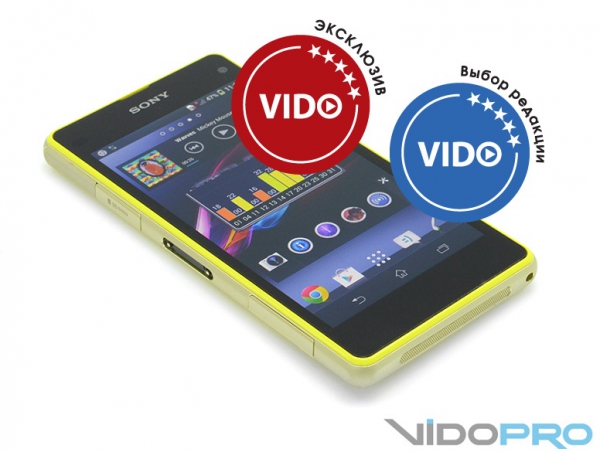
Equipment
The original box contains a power supply, a microUSB cable, a wired headset with replaceable ear pads, as well as a quick user guide and a set of additional brochures.
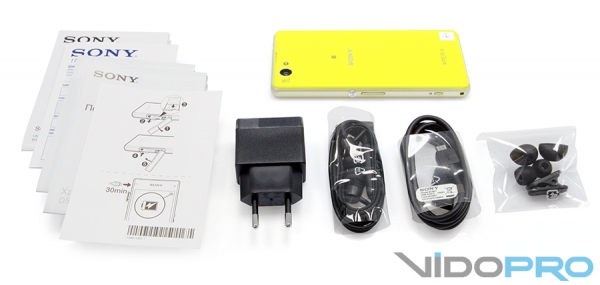
Design and ergonomics
The smaller version looks exactly like the Z1, which has been scaled down proportionately while maintaining clean lines and rounded edges. The model is available in bright pink and lime colors, as well as classic white and black.

The body is made of a solid aluminum frame with an anodized coating, the front panel is covered protective glass, and the back is made of damage-resistant transparent plastic.

At the same time, moisture and dust resistance has been preserved; all connectors, except for the audio port, are covered with plugs. Taking a shower or jumping into the pool with a smartphone in your pocket will not end in tragedy.

Above the screen there is a webcam, light and proximity sensors and a speaker in a small recess. An event indicator is also installed there.
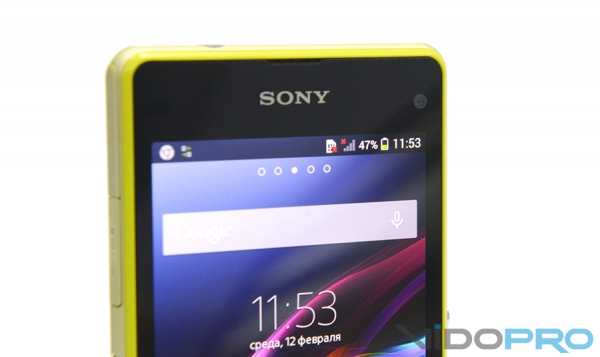
Despite the wide frame at the bottom, the manufacturer decided to use screen touch buttons, instead of a separate block.
On the right side, right under the thumb, there is a round power/unlock button made of aluminum. And just below is the volume rocker and separate button quick launch cameras.

A multimedia speaker and microphone are hidden behind the oval grille on the bottom panel.

With a thickness of just under 1 cm, the smartphone weighs 137 g.
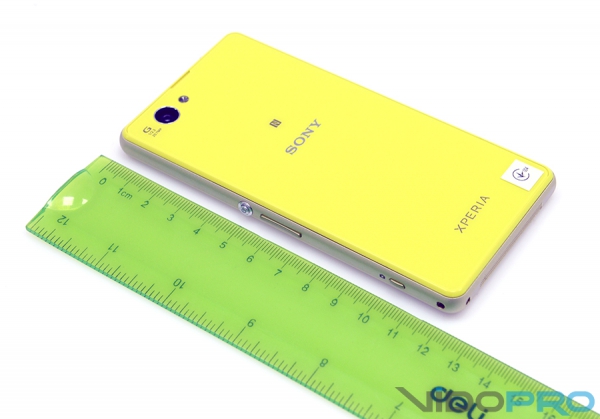
Display
The 4.3-inch matrix is made using TFT technology. TRILUMINOS display resolution is 1280 x 720 pixels with a density of 342 ppi.

The screen supports X-Reality technology wide angles review, excellent color reproduction and incredible clarity. White balance settings are available in the settings, allowing you to change colors to personalize the display.
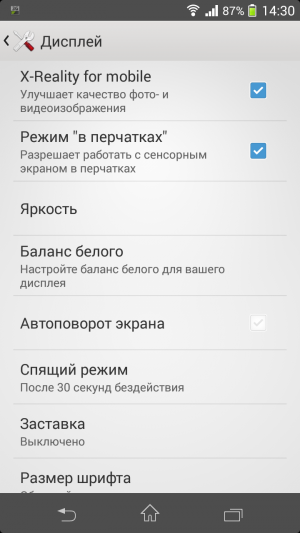
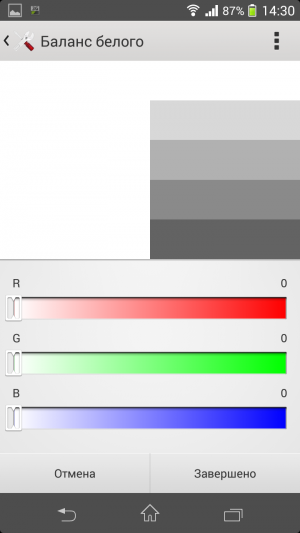
The sensor is incredibly sensitive, it recognizes touches with gloves and wet hands: enviable versatility.
Ergonomics
The compact version is for people who are intimidated by the size of the original Z1. The Compact fits perfectly in the palm of your hand, doesn't slip out, and doesn't look like a snow shovel. Therefore, operating with one hand will not be difficult.
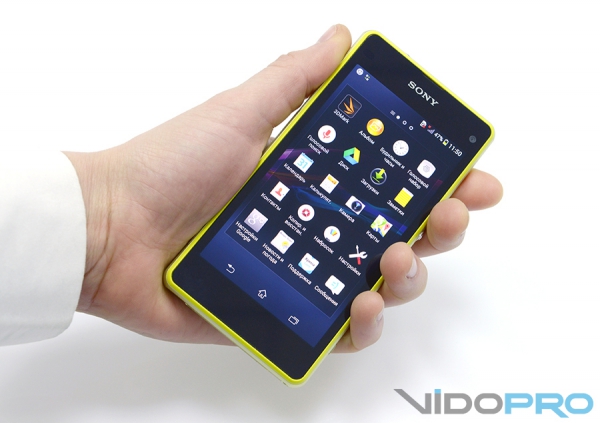
The on-screen keyboard is large enough for speed dial text in both portrait and landscape positions. The buttons are large, touches are recognized accurately.


Sound
You don't need to connect headphones to listen to music and watch movies on the Z1 Compact. The speaker has loud and clear sound. And the sound effects settings transform recordings beyond recognition, highlighting the bass and creating transparent highs.

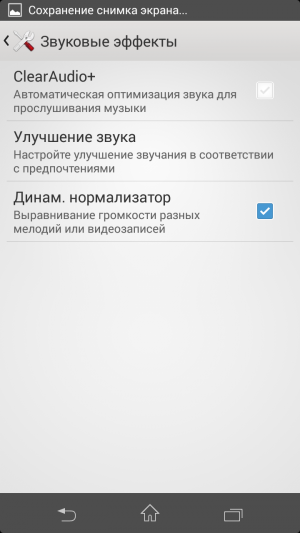

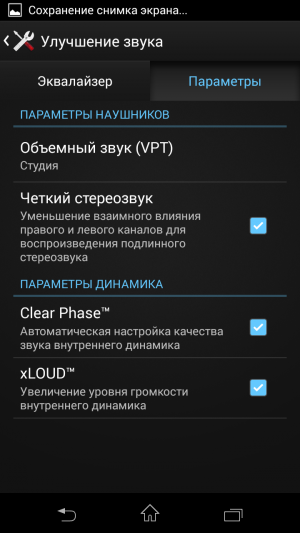
In addition, in the “Call Settings” item there are settings for the sound quality when talking with the interlocutor. You can use an equalizer, voice enhancement, which, subjectively, often worsens the sound, and also programmatically slow down the caller’s speech.


Interface and software
Unlike, compact works on operating system Google Android 4.3 Jelly Bean. This is where the differences end. Branded shell from Sony, as well as a list before installed programs hasn't changed.







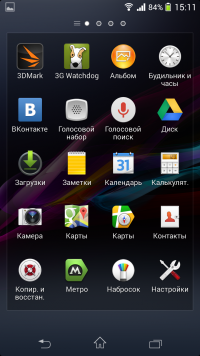
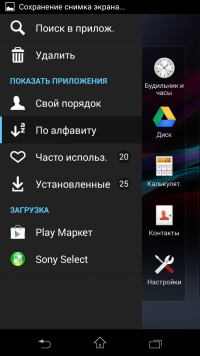
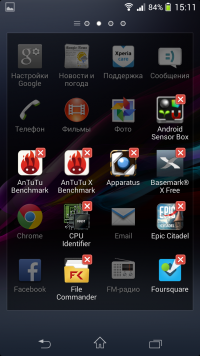

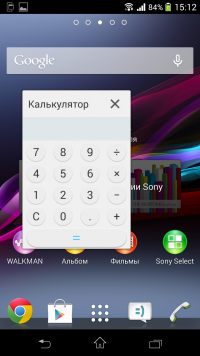

Performance
An honest “mini” boasts flagship characteristics. It is powered by a 2.2GHz quad-core Qualcomm Snapdragon 800 processor with Adreno 330 graphics. In addition to 2GB of RAM, it comes with 16GB of storage. This volume can be expanded using a microSD card.
The pocket version is only slightly behind in performance from the company's main smartphone, judging by the results synthetic tests. Most likely this is due to significant heating of the case when the processor and graphics are running on maximum frequencies. But in everyday use it is difficult to imagine a task that could load the device by at least half.

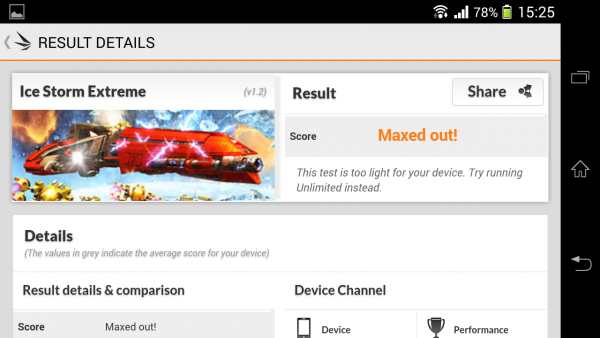
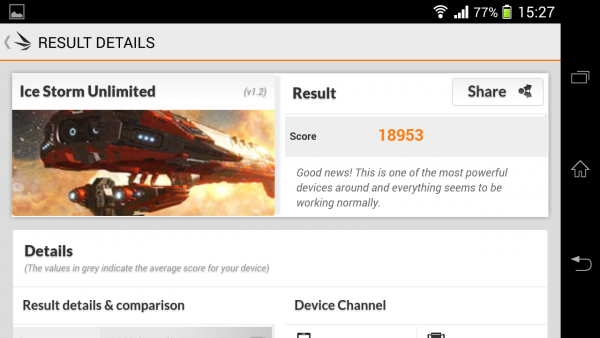


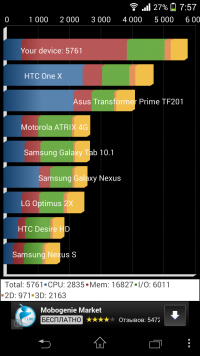
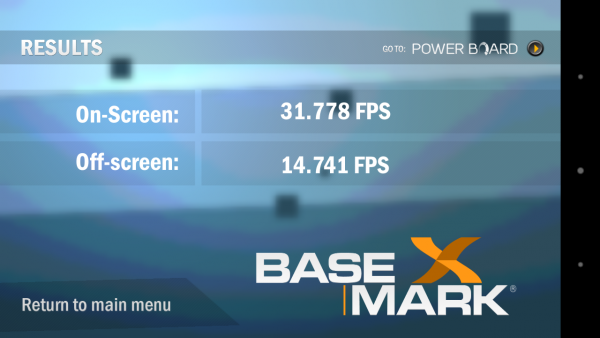

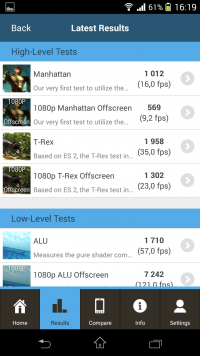
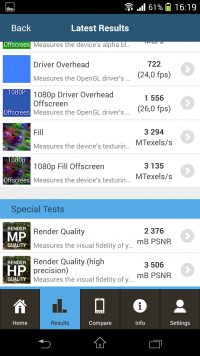
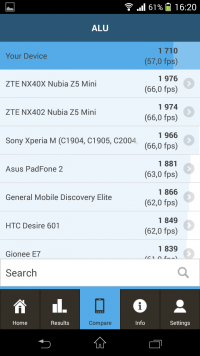
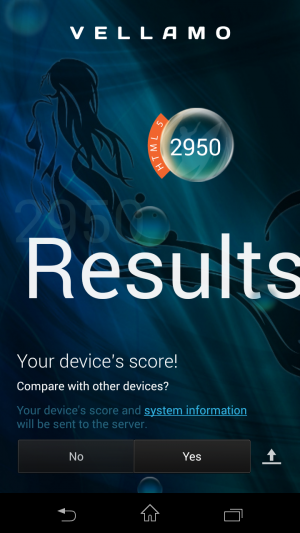

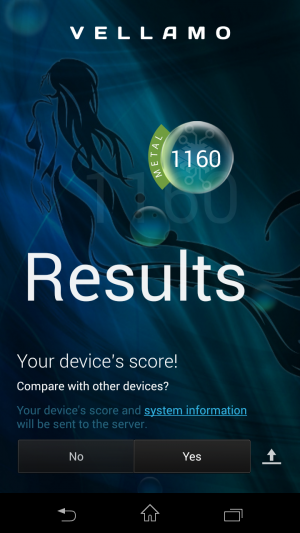
![]()
Camera
Where else will you find a compact version with a 20.7 MP main camera? The smartphone received a 1/2.3″ Exmor RS sensor, a 27mm wide-angle lens with F2.0 aperture and a proprietary BIONZ image processor. The maximum image resolution is 5248 x 3936 pixels. In addition, the device shoots Full HD video at 30 frames per second.
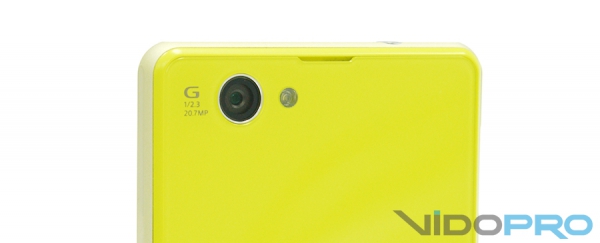
The photos have excellent detail and excellent color rendition, the picture is clear without obvious blurring. The smartphone can easily replace the average compact camera.
Examples of photos:



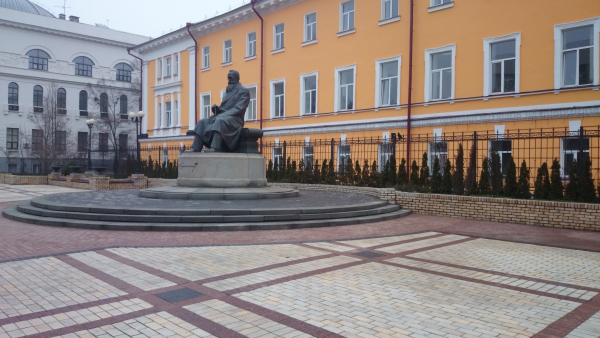







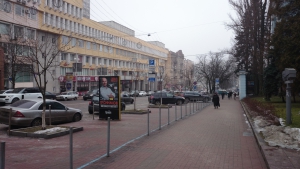



Video examples:
The camera app is packed with modes, settings, and options. At the same time, the interface is simple and uncomplicated. In addition to branded automatic mode, there is a manual one, with the ability to configure all parameters.

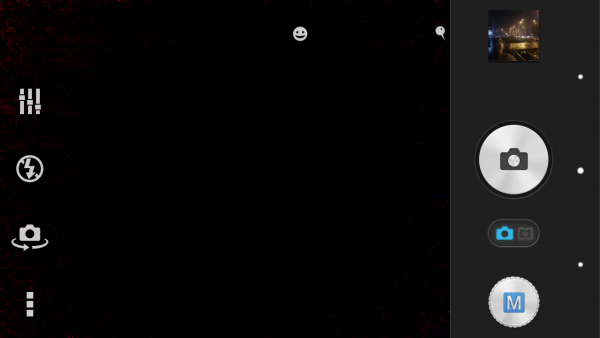


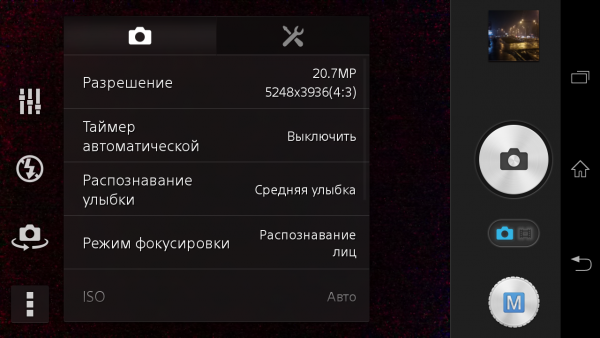




- Timeshift burst will help you choose best photo from the series.
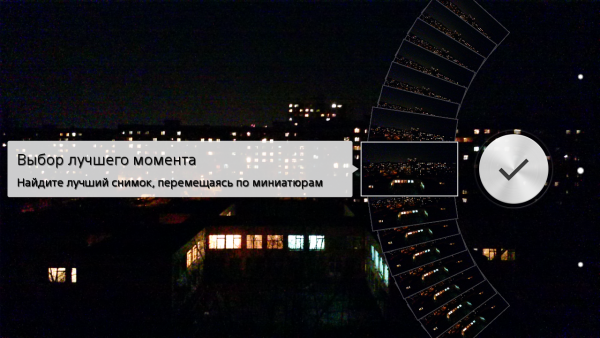
- AR effect Suitable for entertaining children - you can create photos with virtual characters.

In addition, there is panoramic shooting and graphic effects.

Communications
The model exists only in the LTE version. Of course, standard GSM and HSDPA are also supported. In addition, the smartphone received all modern wireless interfaces: Wi-Fi 802.11b/g/n/ac, Bluetooth 4.0, NFC, GPS with A-GPS and GLONASS support, as well as DLNA and FM receiver.

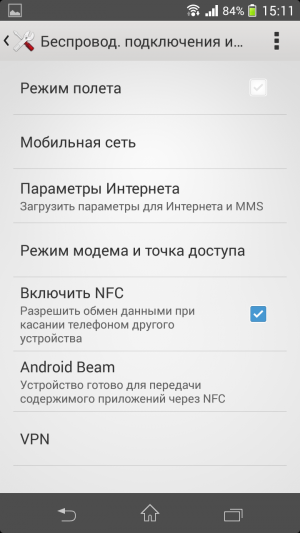
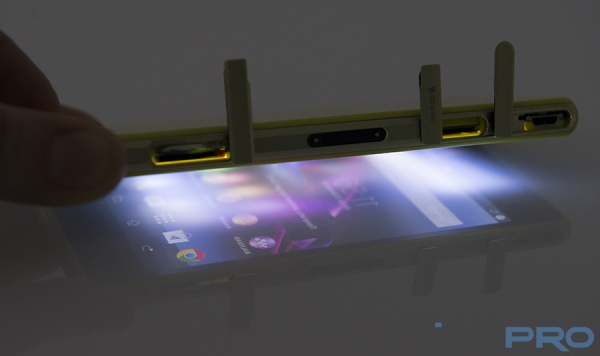
Hidden behind the plugs on the left side are microUSB (MHL), microSD and microSIM connectors, which are illuminated when the display is on. There is also a port for connecting an optional docking station.
![]()

The only uncovered connector is the 3.5 mm headset slot on the top edge.
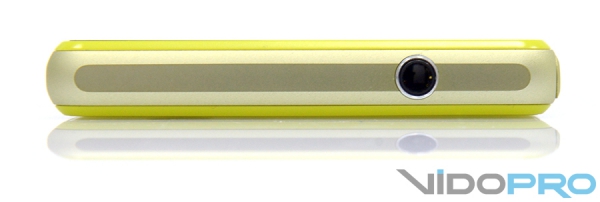
Opening hours
The Xperia Z1 Compact has a slightly smaller battery compared to its larger counterpart. A 2300 mAh battery provides excellent autonomy. With moderate use of functions and infrequent calls, the smartphone will easily work for 3 days. And maximum use of wireless functions, watching videos and surfing the web, games and programs can drain the battery in one incomplete day. Energy saving doesn't improve the situation much.


Impressions
Sony is fighting hard for customers, so the Xperia line of devices is getting better and better. Therefore, it is not surprising that the Xperia Z1 Compact is a unique smartphone - a smaller version with top-end specifications. Protected case, clear display, 20.7 megapixel camera, powerful chipset. Most flagships can't boast even half of this.
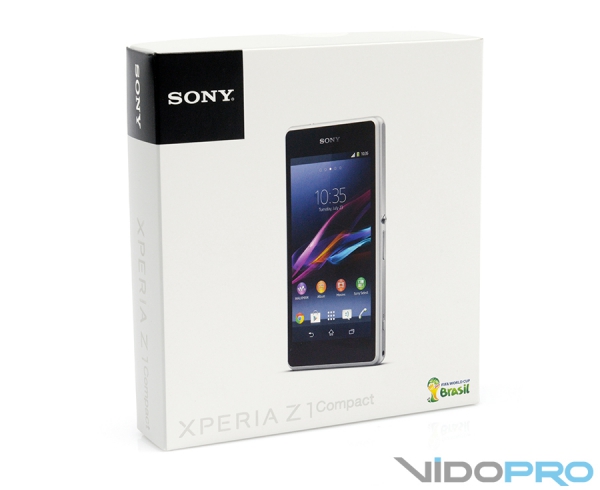
PECULIARITIES
Bright design.
Protected housing.
Compactness.
Powerful filling.
20.7 megapixel camera.
Battery life.
Software .
SPECIFICATIONS
- Model Sony Xperia Z1 Compact D5503
- Standard GSM 850/900/1800/1900, HSDPA 850/900/1700/1900/2100, LTE 800/850/900/1700/1800/1900/2100/2600
- Dimensions 12.7 x 6.49 x 0.95 cm
- Weight 137 g
- CPU Qualcomm MSM8974 Snapdragon 800, 2.2 GHz, quad-core
- GPU Adreno 330
- Display 4.3", TFT, Triluminos
- Permission 1280 x 720 pixels
- RAM 2 GB
- Memory 16 GB + microSD up to 64 GB
- Nutrition Li-Ion 2300 mAh
- Camera 20.7 MP + 2 MP
- Communications GPRS, EDGE, HSDPA, HSUPA, Wi-Fi 802.11b/g/n/ac, Wi-Fi Direct, Bluetooth 4.0, NFC, GPS, A-GPS, GLONASS, DLNA, FM radio
- Connectors microUSB (MHL), 3.5 mm output
- Additionally dustproof and waterproof housing, IP55/IP58 standards
- OS Google Android 4.3 Jelly Bean with proprietary graphical shell
At the beginning of the year, Sony announced the release of a new mobile device, which certainly stands out from the range of equipment sold by other manufacturers. For several days I tested this new phone - the Sony Xperia Z1 Compact.
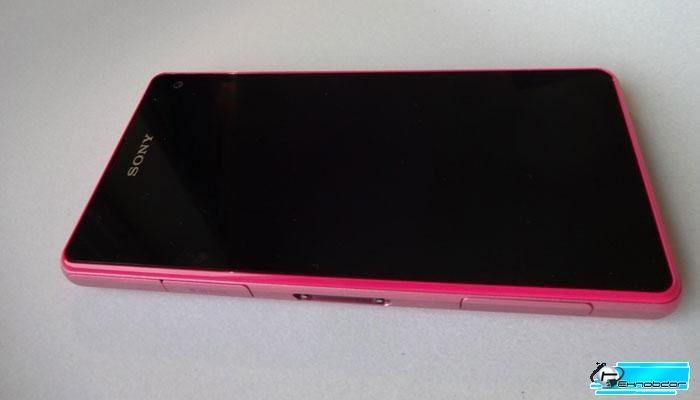
Smartphone Sony Xperia Z1 Compact - Reviews
At the end of last week I received a package from Sony with the latest smartphone Japanese company called Sony Xperia Z1 Compact. After spending a few days with it, I can confidently say that the phone will stay with me for a long time. Thus, in my pocket it will replace last year’s flagship Xperia Z1, presented at the IFA 2013 exhibition in Berlin. Combination highest performance and “compact” sizes are a 100% hit.
The difference between Sony Xperia Z1 Compact
Nowadays, when it comes to Android phone manufacturers' offerings, the media gets the most attention. the best devices, which often differ from each other in everything except one key parameter: the length of the screen diagonal.
Flagship models from companies such as HTC, Samsung and LG have in common that they are much closer to the phablet segment than to regular smartphones.
A five-inch screen will not surprise anyone for a long time, and people interested in small phones, are doomed to a weaker processor, less RAM and a worse camera. The Japanese company Sony decided to break such stereotypes, which earlier this year presented the official international version of the smartphone called Xperia Z1 Compact.
It's time to write a review
As mentioned earlier, the Sony Xperia Z1 Compact came into my hands at the end of last week and since then I have begun to use it intensively. In addition, the phone is one of my main work tools, so the main things for me in a smartphone are mobility, speed, reliability, and battery life. In each of these aspects, the Xperia Z1 Compact performs more than well. This phone is even more convenient to use than its older brother, the Xperia Z1, released last year.

The Xperia Z1 Compact is virtually identical to last year's model in terms of specs and design, and the "new" one is simply smaller in size. I'm also glad that new model included all the advantages of the successful Xperia Z1.
The Xperia Z1 Compact eliminates the shortcomings of its predecessor

The main headache for people who were considering purchasing Zet-ens was, of course, the massive size of this phone. Big screen That's one thing, but the device also had a very thick bezel around the display, making the phone feel even more powerful. Another unpleasant thing about the screen was its quality. Sony claimed that they used space technology improving image processing, but the truth was that the image quality wasn't really that great.

Compared to Super screens LCD3 in HTC One and latest generation AMOLED in the Galaxy S4, the Sony screen is inferior to them in quality, color reproduction and viewing angles. With the Xperia Z1 Compact, both problems have been resolved - firstly, the panel now has a much more reasonable 4.3-inch diagonal length and is made using different technology, meanwhile, the image quality does not stand out compared to the company's competing products, although, Paradoxically, the Z1 Compact displays fewer pixels.
Remember that more is not better
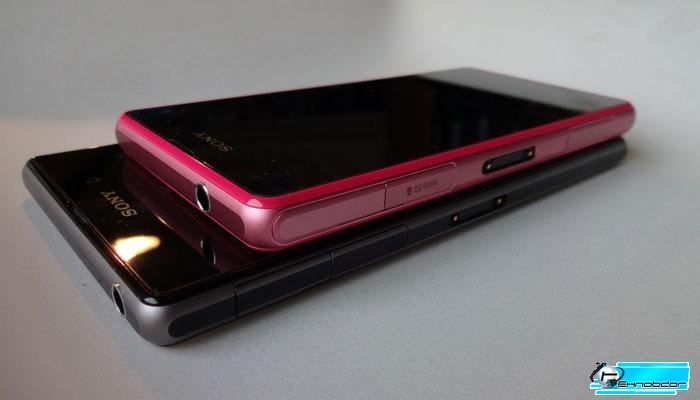
What may be disappointing for many people is the fact that by reducing the size the manufacturer has also reduced the resolution, but I can defend the manufacturer in that regard. Actually, 720p doesn't sound impressive when you think about the fact that in 2013, 1080p screens dominate. And in the coming months, screens with 2K resolution should appear, i.e. 2560 by 1440 pixels! But so what? A higher resolution means at the same time more charging consumption through the same screen and processor that creates the image. And the benefits? Actually invisible.
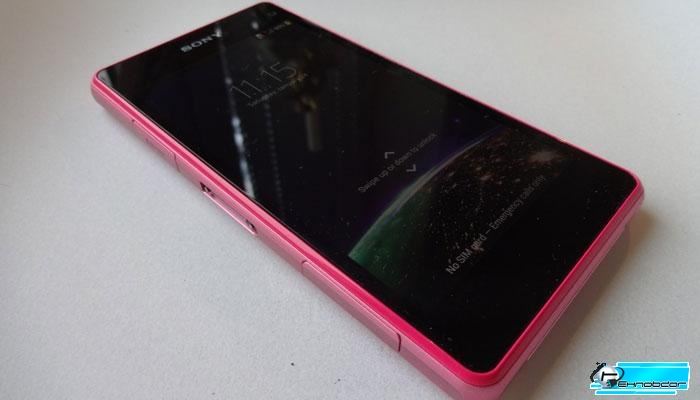
The more pixels on the screen, the better it looks, but only on the advertising brochure. In practice, with the naked eye, a user using a phone is not able to see - or at least I cannot see - the difference between 720p and more high resolution in such a small area (with the same screen parameters).
Xperia Z1 Compact specifications
The rest of the specification remains largely unchanged. Sony Xperia Z1 Compact in terms of parameters belongs to the upper part model range, like Z1. By the way, here we are dealing with a Qualcomm Snapdragon 800 system and 2 GB of RAM, thanks to which there are no applications and games that will be hosted separately. Additionally, the Z1 Compact, thanks to its 720p panel, is slightly faster than the larger Z1. Don't change the number of ports and card slots (and only slightly their system), and the new phone has the same 20.7-megapixel camera with LED backlight. GPS, NFC, Bluetooth, Wi-Fi and LTE are of course also available.
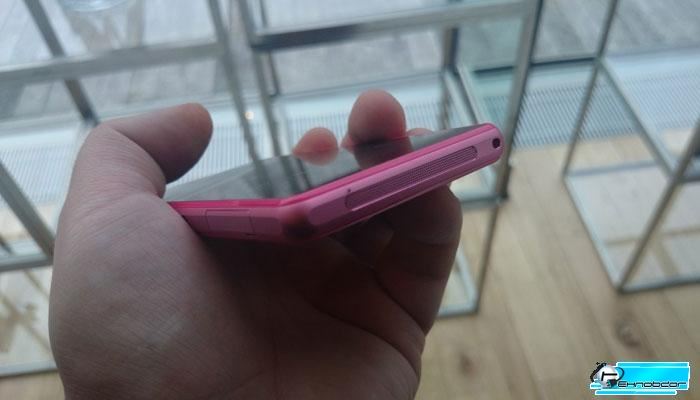
My only concern with the Xperia Z1 Compact was its battery life. But here too the smartphone surprised me. The device has a smaller battery, but also... less current demand, due to screen size and resolution. Rarely has any of the smartphones I tested could boast that by the end of the day the battery level showed 50%, and the new Xperia Z1 Compact pleased me with this figure.
The appearance is not surprising
The manufacturer decided not to bother and settled on the same design as in previous models. The phone is flat, and the front and back cover made of glass. The phone is surrounded by a solid aluminum frame, which hides plugs for the MicroUSB port and slots for microSD and microSIM cards. Everything is on the left side. The charging connector is located on the top of the phone.
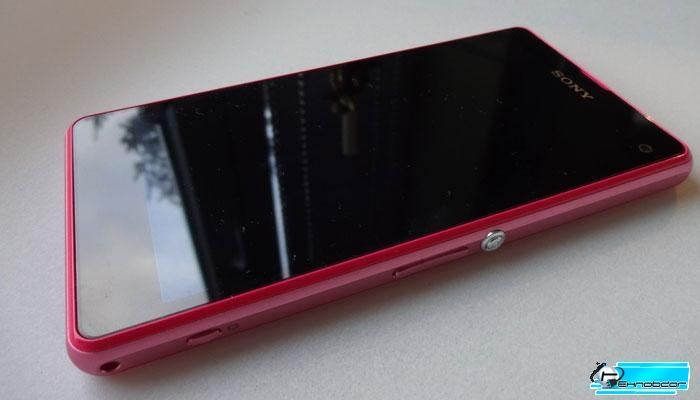
On the right side, slightly above the middle, there is a rounded lock button. Just below it is the volume control. Further, at the bottom on the right side there is, rarely found in smartphones, a two-stage shutter button, holding which allows you to turn on the camera - and then, by selecting the appropriate option in the settings, even immediately take a photo.
Xperia phone The Z1 Compact is well made. Nothing creaks, the design itself is compact and thin. Although the device is a little thicker than last year's ZET-ons, it fits very comfortably in the hand. It's almost the same length as the iPhone 5(S), it's only slightly wider, while the display is 0.3 inches larger.
When turned on, the screen contains the same amount of content as in previous version. All labels and designations are just a little smaller, but not so much that selecting the appropriate item in the menu would be problematic. Of course, for gaming and watching movies Xperia screen The Z1 Compact isn't very suitable, but it's what you need for work.

After closing the MicroUSB port and slots for MicroSD cards and microSIM, top phones from the Xperia line are not afraid of contact with water. So you don't have to worry about your phone stopping working when it rains, or when it accidentally falls into the sink, and you don't have to end up buying another copy. From own experience I know that isolation open port The minijack is made very well, and the speaker located on the bottom edge of the well will not be damaged after a flood. The only problem arises when talking in the rain - the glass body of the phone becomes quite slippery.
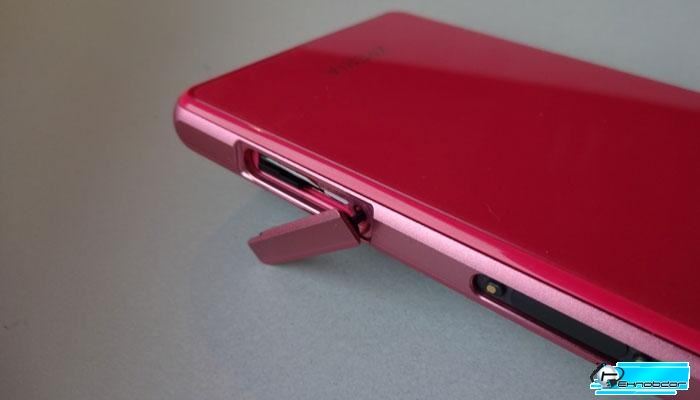
The developers of Sony Xperia Z1 decided to please their users and expanded the range of body colors. In addition to the classic white and black models, a model in lemon and pink colors has appeared on sale.
Outdated software
The only complaint that can be made to the manufacturer of this phone model is the use of an already outdated Android versions 4.3 Jelly Bean. Although KitKat was released last year, it never made it into the sales version of the Xperia Z1 Compact. It seems that Sony simply did not have time to prepare the firmware on time, because they really wanted to present their phone during bidding at CES 2014, or at the upcoming MWC. But it seems that Android 4.4 will soon appear in the Xperia Z1 Compact - system firmware changes have already been included in the list of amendments, due to latest version Google.

It’s hard to say more about the software than I wrote in the case of the Z1. The header is identical, and many built-in applications are 99 percent the same. In September there will be updates for some of the system programs, which can only be assessed as a plus - for example, in Mail the navigation bar has been moved to the very top to be compatible with the system Gmail, access to Sony PlayMemories has appeared in the Gallery, and in the SMS application you can disable “tails”.
The system looks simple but very good
Despite the fact that Sony's modifications Android form not as much as in the case of, for example, HTC Sense, but the system looks good. The notification bar on the desktop is transparent, and the strip Home buttons and the app switcher changes color depending on the current app. The list of installed programs scrolls horizontally and can be used to immediately remove them unnecessary programs. In App Drawerze, among other things, there is a link to Sony app Select. Fortunately, there is still a replacement app store, and the manufacturer simply assembles popular apps in the form of links to Google system Play.

In addition, the phone can find quite a few other applications from the manufacturer, of which, as usual, most of them are of no use. Luckily, many of them can be removed or disabled in the settings. In typical system applications such as Messages, Calendar, Mail and Phone (except Gallery) dominates white. Even the manufacturer widgets are very aesthetically pleasing. The settings menu is slightly modified compared to pure Android, but you can easily figure it out.
Just two small notes on the functions of the Sony Xperia Z1 Compact
One note is that, for some unknown reason, the Xperia Z1 Compact lacks a speed dial function that binds a contact to one of the buttons on the screen. I don't understand what the programmers were thinking about when they removed this feature because it doesn't seem to me like it happened by accident. For me, the lack of this feature is a huge problem.
The second thing that sometimes annoys me is the notification counter right on the desktop. It's nice that Sony reports unread emails from the mail system and new notifications from Facebook, but the counter only works for a few applications, for example, it does not work for Gmail. The worst part is that it cannot be turned off.
Let's sum it up
As a rule, I test a phone for two weeks before writing a review, but in the case of the Sony Xperia Z1 Compact, I decided to make an exception. That's because it's virtually identical to the phone I've been using for the past few months. Even before receiving the package, I knew what kind of image quality to expect from the built-in 20.7-megapixel camera. I knew everything well system applications and generally knew what to expect from this phone.
Making sure that from the point of view software Xperia, the new phone is actually no different from its older brother, I just have to check the quality of the screen, the battery life, and whether the “compact form” is convenient in practice.
In all three aspects, as we know from the previous paragraphs, Sony met my expectations. If I had to give Sony's engineers a hint for the future, however, it would be that the next release of this phone would really like to see stereo speakers and improvements to the glove screen mode service, which are currently middling.

Fortunately, these shortcomings do not spoil it
As expected, the Sony Xperia Z1 Compact will remain with me for for a long time. This phone was made for me and has virtually no flaws. Its strengths are (finally!) a decent quality screen, long time battery life, water resistance and impeccable speed. I recommend the Xperia Z1 Compact because it is simply one of best androids, which you can buy today.
The top specification combined with a reasonable screen size works great. Of course, if someone is intentionally looking for a phone with a huge display, then you might want to look at Sony's offerings like the classic Xperia Z1, or even the Xperia Z1 Ultra phablet, but I'm convinced that for most people, looking for a phone With a 4.3-inch screen, the Sony Xperia Z1 Compact is simply ideal.
I'm also wondering if there will be any worthy competitors from other companies for the Sony Xperia Z1 Compact at MWC 2014 in Barcelona. Manufacturers still hold the (wrongly) belief that “more is better.” New phone Sony can essentially be called unique, and at the same time it surprises at a relatively low price. Today, the Sony Xperia Z1 Compact costs about $600, while all large flagships cost much more.
Sony Xperia Z1 Compact is great phone, which will not ruin your wallet.
Sony Xperia Z1 Compact - video review
If you find an error, please highlight a piece of text and click Ctrl+Enter.